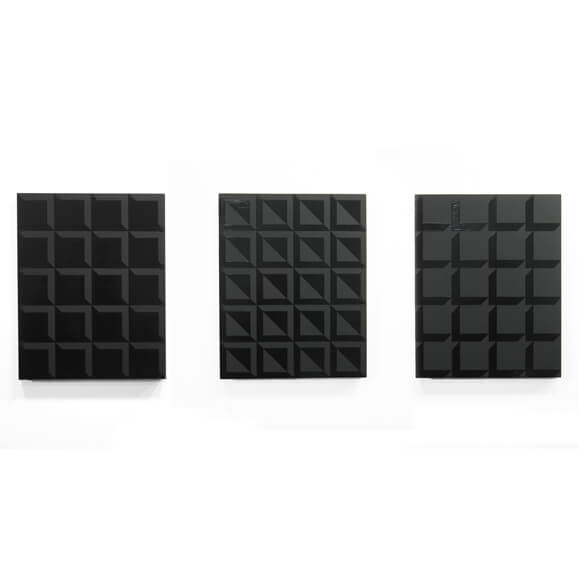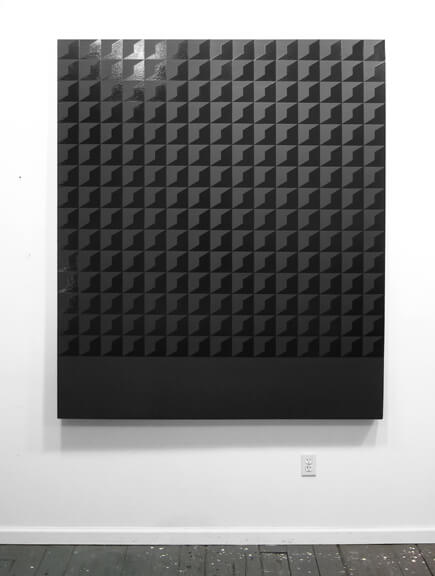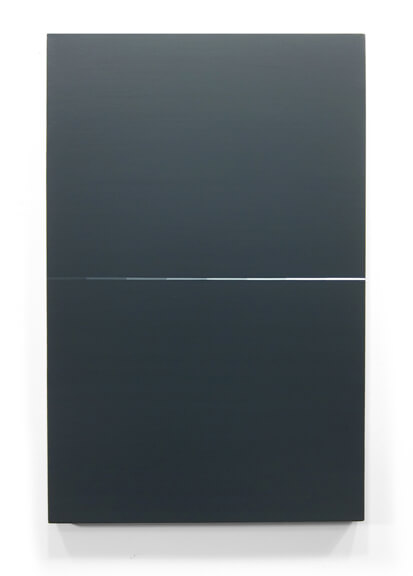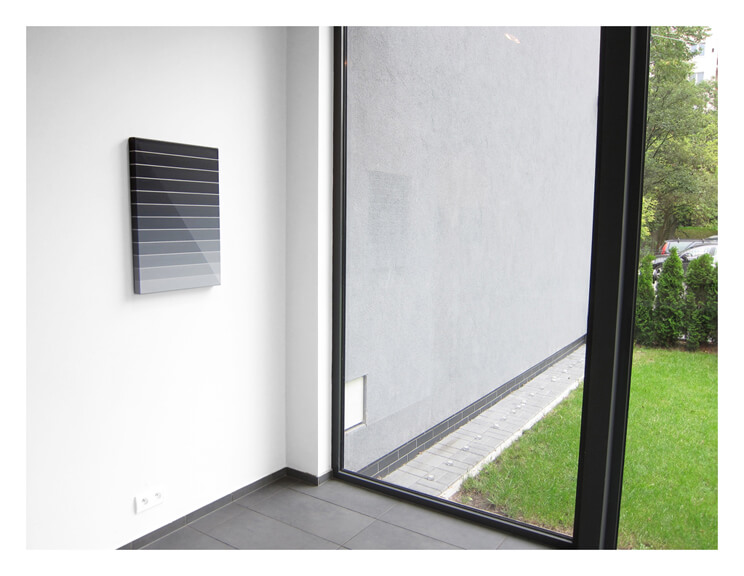Matt Mignanelli: Abstractionist in Black

Matt Mignanelli is a modern painter. An Abstractionist, Mignanelli’s paintings explore the relationship between structure and nature, employing gradating light and structural elements to create enigmatic environments. He draws inspiration from energy, pattern, light, and the industrial landscape. FRONTRUNNER interviewed him this past month following a show in Switzerland.
I notice that your pieces are named after different highways in and around NYC. How does the city, its parts, construction, layout, or grid inspire your work?
I recently did three works named after major highways around New York City. I love titles when they speak to location or a moment in time. Those works were painted this summer when I was spending a lot of time driving those highways, out to Long Island, Upstate, or up to New England.
The city informs my work so greatly and constantly forces me to keep looking and seeing things differently. The industrial landscape and the ways in which light interacts with architecture are visually the main investigations of my work. The nonstop energy and the people that make up the city really inspire me and drives my work ethic.

Your black on black works strike me for their use of gloss and matte finishes. Abstractions draw your eyes in different ways. What is perception, lightness, or relative luminance for you?
The black works have really excited me for a variety of reasons. There is a tranquility and peacefulness to the black. I can get lost in the surface; there is a real depth there that interests me. The works interact with the space in which they are presented and with the viewer, as the light shifts and you move around the room the works really transform.

I like to read the titles of your work. How does memory play a part? Are these titles inspiration, reflection, or something entirely separate?
Memory and place are really important aspects to the works and their titles. Sometimes the titles reference specific places or times, and other times they are just vaguely referential to an experience or a culmination of experiences I’ve had. The titles are always specific to what I’m thinking about as the work is being made, or how the work makes me feel upon completion.
Some of your earlier work was colorful but now I see a trend towards blacks and varying shades of grey monochromes. Do you feel like you are narrowing your focus with these newer works or expanding it? What has that journey been like?
I made a complete departure from color 3 years ago. I found a purity in these monochromes that was extremely refreshing for me. Stripping away color was stripping away distraction, and left the painting with nothing to hide behind. With such simplicity, if the painting doesn’t work it’s very obvious. I love that, it feels very honest to me.

Do you have a daily ritual, a workflow, or process to share?
Routine is very important to me in order to maintain balance. My day begins at 6:00 – 6:30. I’ll be at my desk by 7:00 for coffee, emails, and computer work. I like to be in the studio by 9:30. I don’t keep a computer in the studio to avoid distractions, and the time spent there is just for painting and thinking about the work. It’s really important to me to get at least 9 – 10 hours a day in the studio.
I like to do a lot of the preparatory work outside of the studio. I spend quite a bit of time sketching and coming up with concepts before I go in.
You have traveled a bit now and reached collectors in Europe. What has that been like? Do you think about your work in collectors homes, art fairs, or galleries? What is the best setting for your work?
I greatly enjoy exhibiting in Europe, and have always loved travel and new experiences. It really keeps me fresh. When you’re not proficient in a language and you’re travelling, I’ve found that it gives me time for reflection and ideas that I just can’t find when you’re hearing bits and pieces of conversations all around you. You can drown it all out and just think.

It’s interesting as an artist to see how a work travels from studio, to exhibition, to collector. The space in which works are displayed change them to a certain extent for me, and that evolution interests me.
As an artist, you are used to being in control. You control the work from its inception, you have control over the exhibition environment, and once it’s purchased you relinquish control. That said, many collectors are very mindful of your choices, and aesthetic and honor that, sometimes you never see the work again.
In an ideal situation I like to think of the work in the white box. I think it allows for nothing but concentration on the piece itself, but living with art gives back in a different way, a way that is none less pure, just different.
Responses